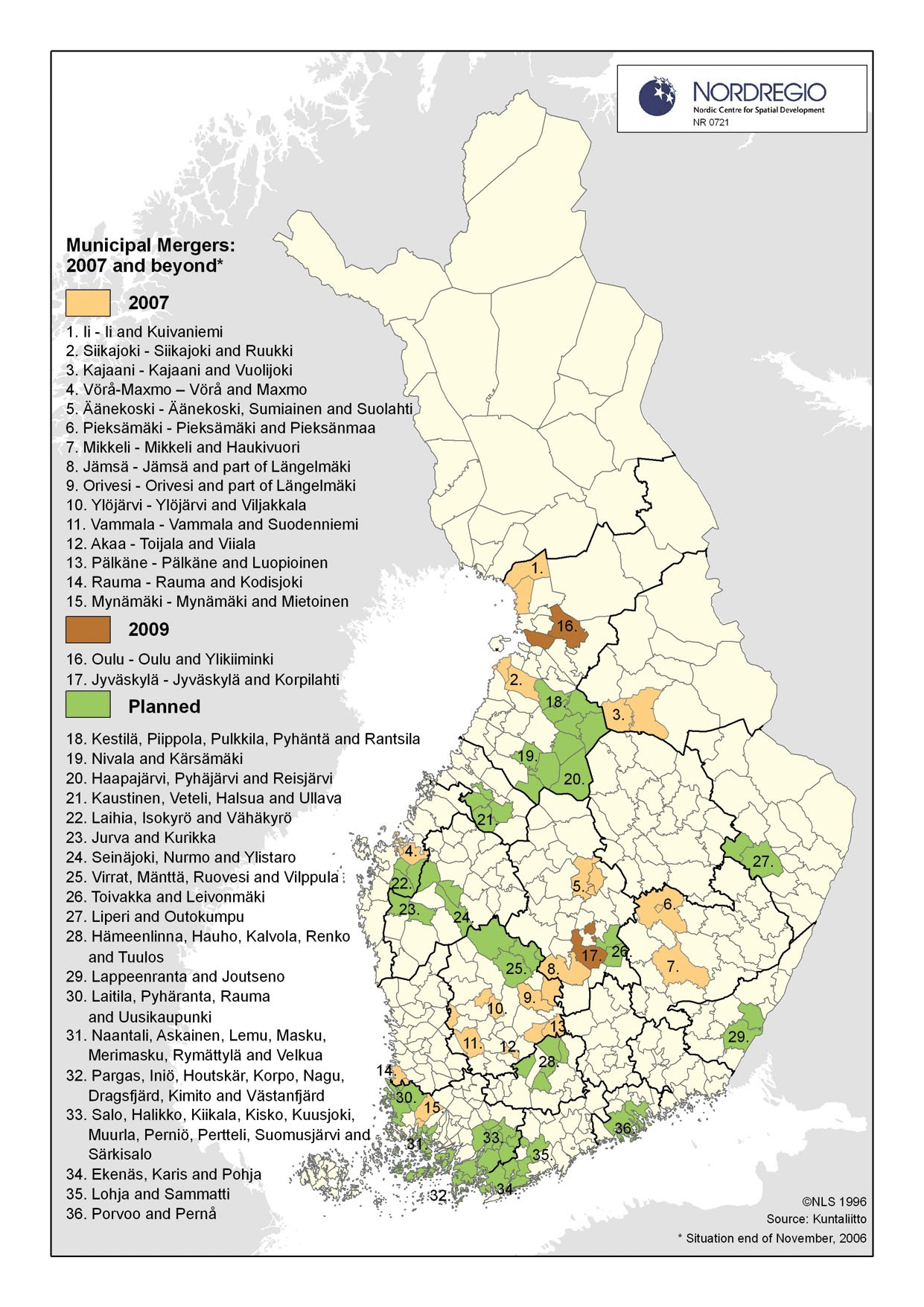"PARAS", which is both as an abbreviation based on the words "service structure" (palvelurakenne), while also meaning "best" in Finnish, has been a highly symbolic epithet in the new reform process.
The project has at its core the ambition to identify the best, or at least the best achievable and politically feasible structure for local authorities and service provision. Therefore, the question soon became one of "how many municipalities" or "how many inhabitants", crystallising into a political debate centred on achieving or avoiding municipal mergers, depending on the political affiliation of the interested party.
Similarly to other Nordic countries, the ideal size of local authorities has been the most eagerly debated issue connected to the reform thus far: In Finland, 20 000 inhabitants has emerged as the 'magic figure' for the minimum size of a viable municipality.
20 000 has also been set as the threshold figure in basic healthcare and social services, while in secondary vocational education the 'ideal size' of units is deemed to be around 50 000. Some more specialised services will also in future be provided by larger associations of local authorities ('joint municipal boards').
Currently there are 431 municipalities in Finland. Thus far, the merging of municipalities has mainly taken place on a voluntary basis. However, the number of municipalities is likely to decrease further, with 12 mergers set for the beginning of 2007 with an additional 20 mergers being prepared for sometime thereafter.
A number of alternative scenarios have been discussed in the media, all of which have in common a drastic reduction in the number of municipalities, varying, conservatively, between 123 units on the one hand, and rather more radically to something between 40 and 50 units, based on different constellations of commuting and services, on the other.

Click to view larger image.